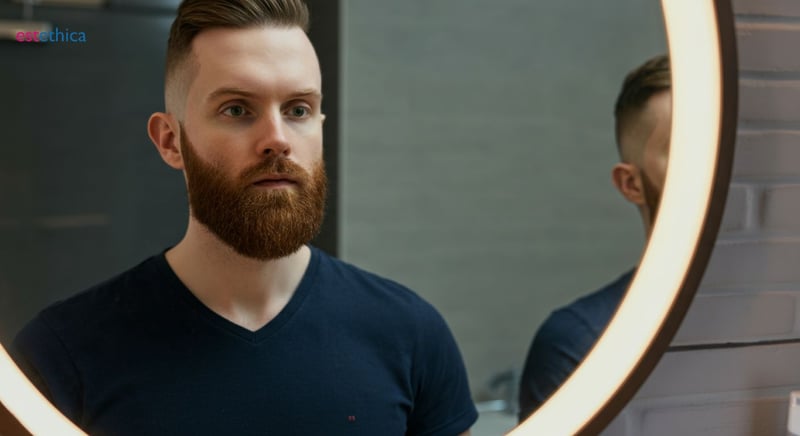Mastering Beard Transplant: A Complete Guide
Boost your confidence with a masterfully executed beard transplant. Learn what to expect from costs to techniques in our guide.
In recent years, the trend of facial hair has seen a significant rise, with beards becoming a symbol of masculinity, style, and self-expression. For those unable to grow a full, lush beard, modern medicine offers a remarkable solution: the beard transplant. This transformative procedure promises not only to enhance your appearance but also to boost your confidence.
The journey of understanding beard transplants begins with exploring the basics of the procedure, navigating techniques, and knowing what to expect before, during, and after the surgery. In this comprehensive guide, we aim to demystify the process of beard transplantation and provide all the necessary insights for those considering a facial hair restoration.
Understanding Beard Transplantation Basics
Factors Influencing Beard Transplant Cost
While the cost of a beard transplant can vary, several factors influence the overall expense. The complexity of the procedure, the number of grafts required, and the expertise of the surgeon are key considerations. Additionally, the location of the clinic can impact pricing, with urban centers often commanding higher fees. It's essential to research and choose a reputable clinic to ensure quality results.
Key Considerations for Choosing a Beard Transplant Clinic
- Clinic Reputation: Look for clinics with positive reviews and successful case studies.
- Surgeon's Experience: Ensure the surgeon has extensive experience in facial hair restoration.
- Technology Used: Opt for clinics that utilize the latest beard implant techniques.
Choosing the right clinic is crucial for achieving a natural-looking beard. It's advisable to consult multiple clinics to compare their offerings and expertise.
Steps in the Beard Transplant Process
- Consultation: Discuss goals and assess facial structure with the surgeon.
- Follicle Extraction: Hair follicles are carefully extracted from the donor area.
- Implantation: The follicles are implanted into the beard area to achieve desired density.
Understanding these steps helps in setting realistic expectations for the procedure. For more detailed insights, explore Mastering Beard Transplant: Techniques and Insights.

Exploring the Best Beard Transplant Techniques
Understanding the Cost Factors in Beard Transplantation
When considering a beard transplant, understanding the cost factors is crucial. While specific pricing details are not provided, several elements influence the overall expense. These include the complexity of the procedure, the number of grafts required, and the expertise of the surgeon. Additionally, the location of the clinic can impact pricing, with urban centers often commanding higher fees. It's essential to research and choose a reputable clinic to ensure quality results.
Advantages of Different Beard Transplant Techniques
- Follicular Unit Extraction (FUE): Offers a natural and dense look with minimal scarring.
- Direct Hair Implantation (DHI): Increases follicle survival rate by reducing handling.
- Customized Approach: Techniques are tailored to individual hair types and desired outcomes.
Each technique has its unique benefits, making it important to consult with a specialist to determine the best approach for your needs.
Steps to Achieve Optimal Beard Transplant Results
- Initial Consultation: Discuss goals and assess facial structure with the surgeon.
- Technique Selection: Choose between FUE, DHI, or a combination based on individual needs.
- Post-Procedure Care: Follow specific aftercare instructions to ensure successful healing and growth.
By understanding these steps, patients can set realistic expectations and achieve the desired beard density and appearance.

Facial Hair Restoration: What to Expect
Post-Operative Care and Recovery
After undergoing a beard transplant, adhering to post-operative care is crucial for optimal recovery. Patients should avoid strenuous activities and follow the physician's instructions meticulously. This includes applying prescribed ointments and avoiding direct sunlight to minimize swelling and redness. These symptoms typically subside within a week, paving the way for successful healing.
Understanding the Growth Cycle
The journey to a fuller beard doesn't end with the procedure. Initially, some transplanted hairs may shed, a normal phase as follicles adjust. Over the following months, these follicles will begin producing new, permanent hair, gradually enhancing beard density. This process underscores the importance of patience and adherence to care guidelines.
Factors Influencing Beard Transplant Success
- Patient's Health: Overall health can impact healing and hair growth.
- Surgeon's Expertise: Skilled surgeons ensure precise follicle placement.
- Post-Procedure Care: Following care instructions enhances recovery and results.
These factors collectively contribute to the success of a beard transplant, emphasizing the need for careful planning and execution.
Steps to Ensure Optimal Results
- Pre-Surgery Preparation: Avoid alcohol and smoking to promote healing.
- Immediate Post-Op Care: Follow all medical advice to reduce complications.
- Long-Term Maintenance: Regular grooming and care support sustained growth.
By understanding and implementing these steps, patients can maximize the benefits of their beard transplant, achieving a natural and fuller beard over time.

Navigating Beard Transplant Recovery
Essential Post-Transplant Care Tips
Recovery from a beard transplant involves careful adherence to post-operative care guidelines. During the initial week, avoid direct water pressure and harsh cleansers on the face to protect the newly implanted follicles. Gentle handling of the transplanted area is crucial to prevent disruption of the follicles.
Understanding the Recovery Timeline
By the end of the second week, most patients can resume their normal skincare routines. However, it's advisable to avoid shaving for at least three weeks to allow the follicles ample time to anchor securely. Over time, the full effects of the transplant become evident, often leading to a significant boost in self-confidence and a more polished appearance.
Key Steps for a Smooth Recovery
- Initial Care: Avoid strenuous activities and follow hygiene guidelines.
- Gradual Resumption: Slowly reintroduce normal skincare routines after two weeks.
- Long-Term Maintenance: Continue gentle care to support follicle anchoring.
These steps ensure a smooth recovery and optimal results, enhancing both appearance and confidence.
Common Recovery Challenges and Solutions
- Itching: Use prescribed ointments to alleviate discomfort.
- Swelling: Apply cold compresses to reduce swelling.
- Follicle Shedding: Understand that initial shedding is normal and temporary.
Addressing these challenges effectively can significantly improve the recovery experience and outcome.
Advanced Beard Transplant Techniques for Natural Results
Comprehensive Beard Transplant Process with Patient-Centric Care
Frequently Asked Questions
What is a beard transplant and how does it work?
What are the best beard transplant techniques available?
What should I expect during the recovery period after a beard transplant?
Is a beard transplant permanent, and what factors influence its success?
How can I choose the right beard transplant clinic?
Discover the path to your healthiest and most beautiful self with estethica's award-winning services. Contact us today for a free consultation and experience the difference!
📞 Call Now for Your Free Consultation